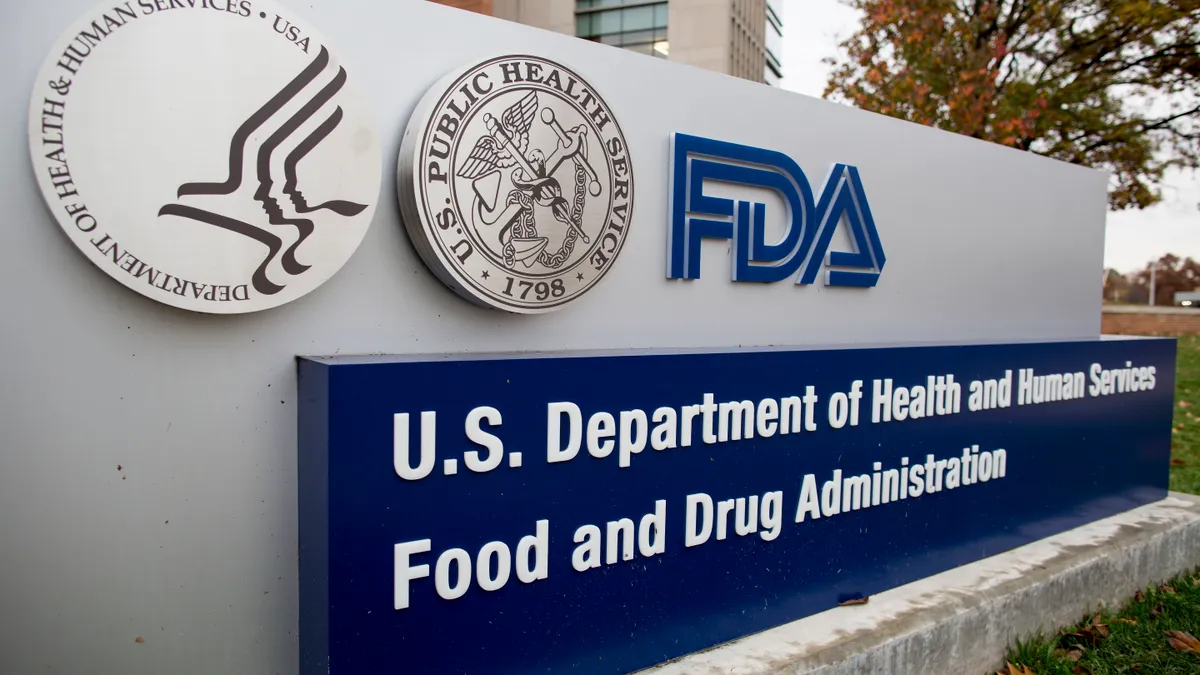Dive Brief:
-
FDA awarded a first-of-its-kind emergency use authorization to a respiratory muscle stimulator device designed to help wean COVID-19 patients requiring mechanical ventilation off of a ventilator.
-
The product from Crestwood, Kentucky-based startup Liberate Medical works by applying transcutaneous neuromuscular electrical stimulation to the abdominal wall muscles during exhalation from the lungs, according to the EUA letter for the VentFree device dated May 1.
-
FDA previously recognized the technology with a breakthrough device designation, announced by the company in January 2019. The product gained CE marking in October 2019.
Dive Insight:
Prior to the public health crisis creating unprecedented demand for ventilators, Liberate was making the case for its device by highlighting the dangers of extended mechanical ventilation.
The company has cited research finding that with each additional day of ventilator support, a hospital patient's likelihood of survival decreases and costs increase by more than $1,500. Liberate also notes that longer periods on mechanical ventilation can increase risk for muscle atrophy, psychological conditions, barotrauma, and ventilator-associated pneumonia. At the same time, patients successfully discharged may have reduced functional status and lower one-year survival.
Not only will reducing time on a ventilator potentially improve outcomes for patients, it will also help free up the sought after ventilators during the pandemic, according to the FDA.
Liberate's VentFree system works by applying small electrical pulses to motor nerves that elicit a muscle contraction. Because the therapy doesn't require patient participation, it can be implemented from the early stages of mechanical ventilation when a patient is still sedated or delirious.
FDA said in the EUA letter that there are no approved or licensed device treatments to reduce disuse atrophy of the abdominal wall muscles. FDA review of the device suggesting potential efficacy was based in part on "reported clinical experience from two randomized, controlled feasibility trials, six investigator initiated studies, and additional information about use of the VentFree outside the U.S."
The pilot study of the device, which assessed 20 critically ill mechanically ventilated participants, was published last year. It found the technology may be effective in reducing ventilation duration and length of ICU stay.
The therapy is recommended for delivery in two 30-minute sessions per day, five days a week, for up to six weeks, until a patient is successfully weaned off of the device.
It’s the latest medical device EUA given by the agency in conjunction with the coronavirus public health emergency. The agency established that category of EUAs with an umbrella authorization letter March 24 for ventilators and accessories, as well as devices like anesthesia gas machines and positive pressure breathing devices. Since then, additions to that list include extracorporeal blood purification devices and remote patient monitors.
Similar to the aim of Liberate's respiratory muscle stimulator EUA, FDA gave a nod to Synapse Biomedical on April 13 for its diaphragmatic pacing therapy system, also meant to help wean adult patients off of ventilators. A day later, FDA issued an EUA in the same category to Lungpacer Medical.











